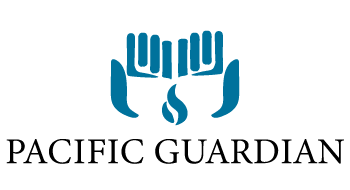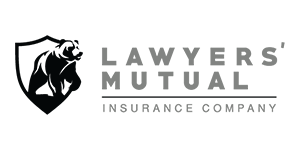INSURANCE RISK MANAGEMENT SOFTWARE
Enterprise Risk Management for Insurance Companies
LogicManager stands as a trusted partner for insurance carriers. Effective risk management extends beyond safeguarding clients; it’s about fortifying the very foundation of your organization. The consequences of overlooking risks can not only impact business performance but also tarnish your insurance company’s reputation. Efficient operation requires assessing diverse risks – credit, market, operational, reputational, and more – while complying with NAIC regulations like MAR and ORSA. Staying on top of these threats demands a powerful and flexible risk management program.
Our commitment to addressing the unique needs of insurance carriers is reflected in our solutions, trusted by numerous companies in the industry. LogicManager provides a comprehensive suite of tools for all areas of your business, including business continuity, internal audit, and third-party risk management. Our software enables you to identify critical risks affecting business performance, engage departments and subject matter experts, develop robust controls, and ensure accountability. Seamlessly meet compliance requirements and report on board-level corporate objectives through our user-friendly and adaptable reports, heatmaps, and dashboards.
EXPERIENCE CUSTOMIZED RISK MANAGEMENT SOFTWARE FOR INSURANCE COMPANIES
LogicManager Understands Your Needs
Tailored for Insurance Companies: Our pre-built, out-of-the-box templates are designed with the unique needs of insurance carriers in mind, facilitating the identification of high-impact risks and optimal resource allocation through objective risk assessments.
Compliance Confidence: Meet NAIC compliance requirements, including ORSA and MAR, using LogicManager’s comprehensive regulatory risk libraries, ensuring a robust and compliant risk management approach.
Guidance Every Step: Receive guidance at every step with LogicManager’s expertise, covering third party risk management, strategic alignment of pricing and reinsurance, proactive risk identification, and efficient response strategies.
Robust Reporting & Dashboards: Engage your board and senior management with insightful reports, heat maps, risk summaries, and customizable dashboards, enhancing visibility into critical risk information.
Economic Resilience: Navigate economic volatility and ensure financial stability through proactive business continuity strategies.
AI Governance & Regulatory Oversight: Effectively balance AI-driven value with regulatory expectations, addressing oversight concerns outlined by regulations such as Dodd-Frank and the Consumer Protection Act.
Climate Risk Resilience: Stay ahead of climate-related challenges with LogicManager’s tools, addressing regulatory changes and climate-related disclosures to build resilient policies in response to environmental and weather conditions.
Inclusive Financial Practices: Navigate issues related to race, financial inclusion, and protection gaps, ensuring your risk management approach is aligned with evolving societal expectations.
The LogicManager Difference
We take the risk so you do not have to. We evaluate each solution’s effectiveness to ensure your success and hold ourselves accountable with an unconditional money-back guarantee. We are dedicated to evolving with you as your needs expand.
Our fixed pricing model offers unlimited licensing and everything you need to succeed in risk management. With no surprise fees, our no-code technology allows for easy configuration and we provide additional support from our advisory team at no extra cost.
We’re not just a software provider, but your trusted partner in enterprise risk management. From one-on-one training sessions to answering technical and best-practice questions, our dedicated advisory analysts are with you every step of the way.

“Service is #1! Knowledgeable, professional, helpful and responsive Advisory Analyst! Still getting used to the program, but like that you solicit input from users and that upgrades are continual. Keep up the great work!”
Assistant Vice President | Risk Management, Pacific Guardian Life
Frequently Asked Questions About Insurance Risk Management
Enterprise Risk Management (ERM) software provides several benefits to insurance companies:
- Identifying Threats: ERM software can identify a variety of threats, including industry-specific, general enterprise, and emerging issues.
- Assessing Impact of Risks: The software can assess both the positive and negative impacts of risks.
- Visualizing Interdependencies: It can visualize interdependencies between risks by frequency, severity, and exposure for both insurable and non-insurable risks.
- Enhancing Communication: ERM software enhances communication with reporting and dashboards.
- Prioritizing Risks: It helps in prioritizing risks so that the company can take appropriate action.
- Supporting Strategic Decisions: Some ERM frameworks support strategic decisions and create real business value.
- Improving Resource Deployment: ERM efforts can improve resource deployment and effectiveness, creating a competitive advantage.
- Technical Infrastructure: A robust technical infrastructure allows for the integration of various data sources, calculation engines, and reporting and analysis tools.
By leveraging these capabilities, insurance companies can manage their risks more effectively and make informed strategic decisions.
Enterprise Risk Management (ERM) for insurance companies is a holistic approach to addressing the myriad risks inherent in the industry. This encompassing strategy involves the following key facets:
- Identifying and Defining Risks: ERM facilitates the identification and definition of various risks, spanning industry-specific, general enterprise, and emerging issues.
- Quantifying Risks: Providing a prospective view, ERM quantifies risks, offering insights into an insurer’s risk profile and capital needs.
- Risk Control: ERM continually monitors and updates controls for mitigated or accepted risks, ensuring ongoing risk management efficacy.
- Integration with Business Strategy: A best-practice risk function fosters an integrated, enterprise-wide risk culture, aligning the risk profile with the overarching business strategy.
- Decision Making: ERM becomes embedded in daily operations, permeating throughout departments and the organizational risk management infrastructure, contributing to informed decision-making.
- Regulatory Compliance: ERM aids insurance companies in adhering to regulatory requirements, ensuring a proactive and compliant risk management approach.
By leveraging these capabilities, insurance companies can navigate their risks adeptly, making informed and strategic decisions that contribute to overall operational resilience and sustained profitability.
Risk management within the insurance industry encompasses the identification, assessment, and mitigation of potential threats impacting operational integrity and value proposition. Key facets include:
- Strategic Risk Management (SRM): A framework addressing disruptive risks, enabling companies not just to mitigate downsides but also leverage arising opportunities.
- Enterprise Risk Management (ERM): A core function managing diverse risks, from underwriting and credit to market, operational, and liquidity risks.
- Customer Service: Crucial for reputation, poor service can lead to customer loss, emphasizing the integral role of customer satisfaction in risk management.
- Risk Sensing: Utilizing tools like risk management software to generate early warnings for emerging strategic risks.
- Scenario-Based Action Plan: Preparation of action plans based on varied risk scenarios, periodically tested for efficacy.
Effective risk management is paramount for insurers, considering that while insurance mitigates risks, certain scenarios may remain uncovered. Prioritizing robust risk management ensures comprehensive protection in this dynamic landscape. Learn more about how to implement risk management for insurance companies in our comprehensive guide.
Insurance companies encounter a spectrum of risks, including:
- Compliance Changes: Regulatory dynamics in the insurance sector are never static. Navigating the dynamic regulatory landscape demands agility to comply with evolving mandates.
- Cybersecurity Threats: Holding sensitive client data makes insurers attractive targets, emphasizing the need for robust cybersecurity measures.
- Technology Changes: The rapid evolution of technology introduces innovative risk assessment methods but also ushers in uncharted territories of potential claims and data security concerns.
- Climate Change & Environmental Factors: Unprecedented environmental changes lead to increased claims related to natural disasters and environmental damage.
- Talent Attraction & Retention: In an industry undergoing rapid transformation, attracting and retaining skilled professionals is crucial for navigating changes effectively.
- Economic Volatility: Economic slowdown or slow recovery can impact the profitability of insurance companies.
To address these challenges, insurance companies must implement comprehensive risk management strategies, adapting to the evolving landscape and ensuring resilience in the face of diverse uncertainties.
Request a Demo
Learn How LogicManager’s ERM Software Can Transform Your Risk Management Program
Speak with one of our risk specialists today and discover how you can empower your organization to uphold their reputation, anticipate what’s ahead, and improve business performance through strong governance.





